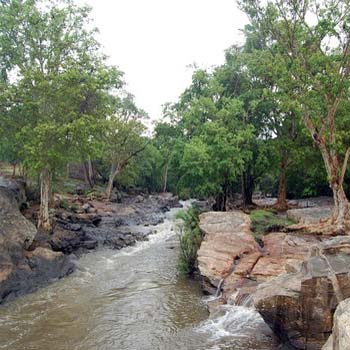Explore Chinnar Wildlife Sanctuary: A Haven of Biodiversity and Natural Beauty

Chinnar Wildlife Sanctuary gained the status of Chinnar National Park in 1984. It spans an area of 90,422 sq. km. The sanctuary’s diverse landscape includes rugged terrains, dry deciduous forests, high sholas, and wet thorny scrub forests with xerophyte species. Notably, it is the habitat of India’s endangered Giant Grizzled Squirrel. Positioned in the rain shadow region of the Western Ghats, Chinnar receives rainfall on just 48 days annually.
Best Time to Visit
Chinnar Wildlife Sanctuary can be visited almost year-round, except during October and November.
How to Reach
By Air: The nearest airport is Cochin International Airport, approximately 150 km from Munnar.
By Rail: Ernakulam houses the closest railway station.
By Road: Chinnar is well-connected by bus services to major locations in the southern states.
Major Attractions
Flora: The sanctuary boasts a variety of trees, including unique thorny scrub forests with Xerophytic species. The flora spans dry deciduous forests, thorny scrub forests, high sholas & wet grasslands. Key species include Acacia arabica (Karivelam), Acacia leucofolia (Velvelam), Santalum album (Chandanam), Anogeissus latifolia (Mazhukanjiram), Elaeocarpus recurvatus (Bhadraksham), and Strobilanthus kunthianus (Neelakurinji).
Fauna: Chinnar National Park is particularly famous as a secondary habitat for India’s endangered giant grizzled squirrel. It also shelters various other wildlife like tigers, elephants, bonnet macaques, gaurs, kraits, spotted deer, Hanuman monkeys, peacocks, spectacled cobras, sambars, turtles, vipers, little cormorants & black eagles.
FAQs:
What is the best time to visit Chinnar Wildlife Sanctuary?
Chinnar Wildlife Sanctuary can be visited almost year-round, except during October and November.
How can I reach Chinnar Wildlife Sanctuary?
By Air: The nearest airport is Cochin International Airport, approximately 150 km from Munnar.
By Rail: Ernakulam houses the closest railway station.
By Road: Chinnar is well-connected by bus services to major locations in the southern states.
What are the major attractions at Chinnar Wildlife Sanctuary?
Flora: The sanctuary boasts a variety of trees, including unique thorny scrub forests with Xerophytic species like Acacia arabica (Karivelam) and Strobilanthus kunthianus (Neelakurinji).
Fauna: It is renowned as a habitat for India’s endangered giant grizzled squirrel and other wildlife such as tigers, elephants, bonnet macaques, and various bird species.
What types of flora can be found at Chinnar Wildlife Sanctuary?
The sanctuary features diverse flora including dry deciduous forests, high sholas, and wet grasslands. Key species include Santalum album (Chandanam) and Anogeissus latifolia (Mazhukanjiram).
Why is Chinnar Wildlife Sanctuary significant?
Chinnar is known for its biodiversity, housing rare species like the giant grizzled squirrel and offering a unique landscape of rugged terrains and dry deciduous forests.